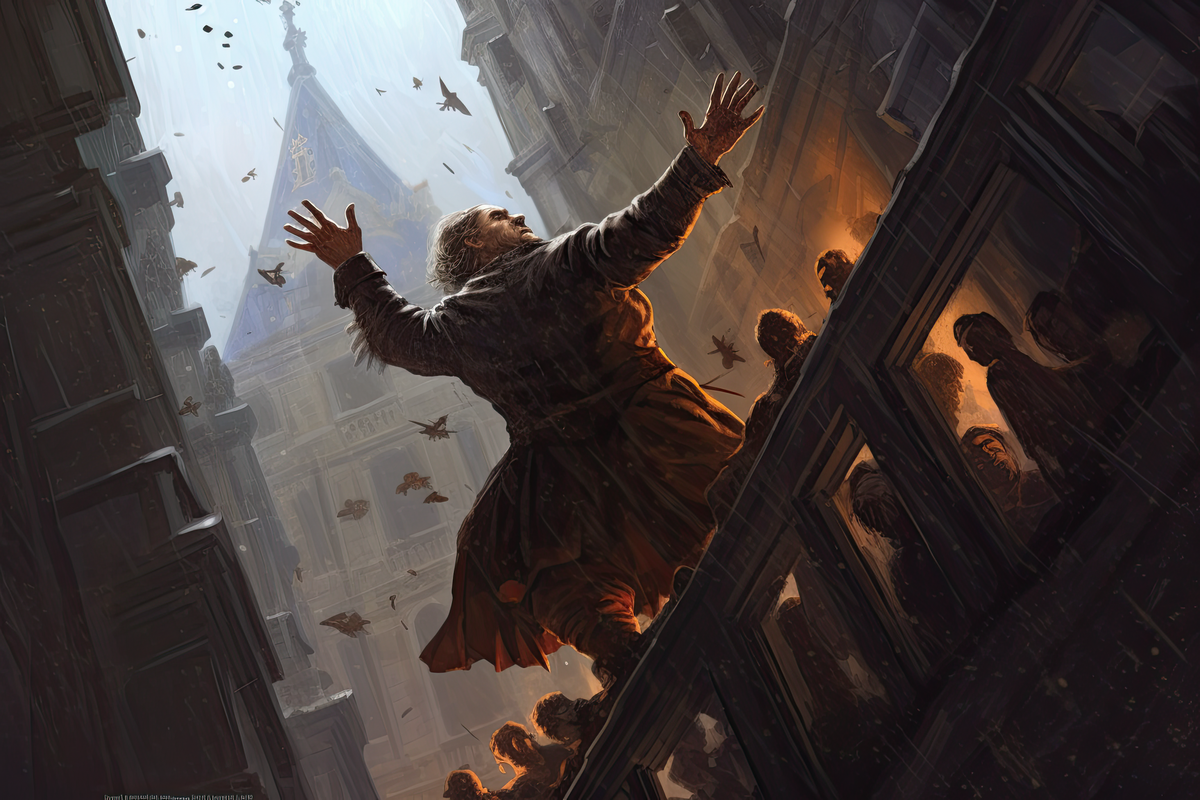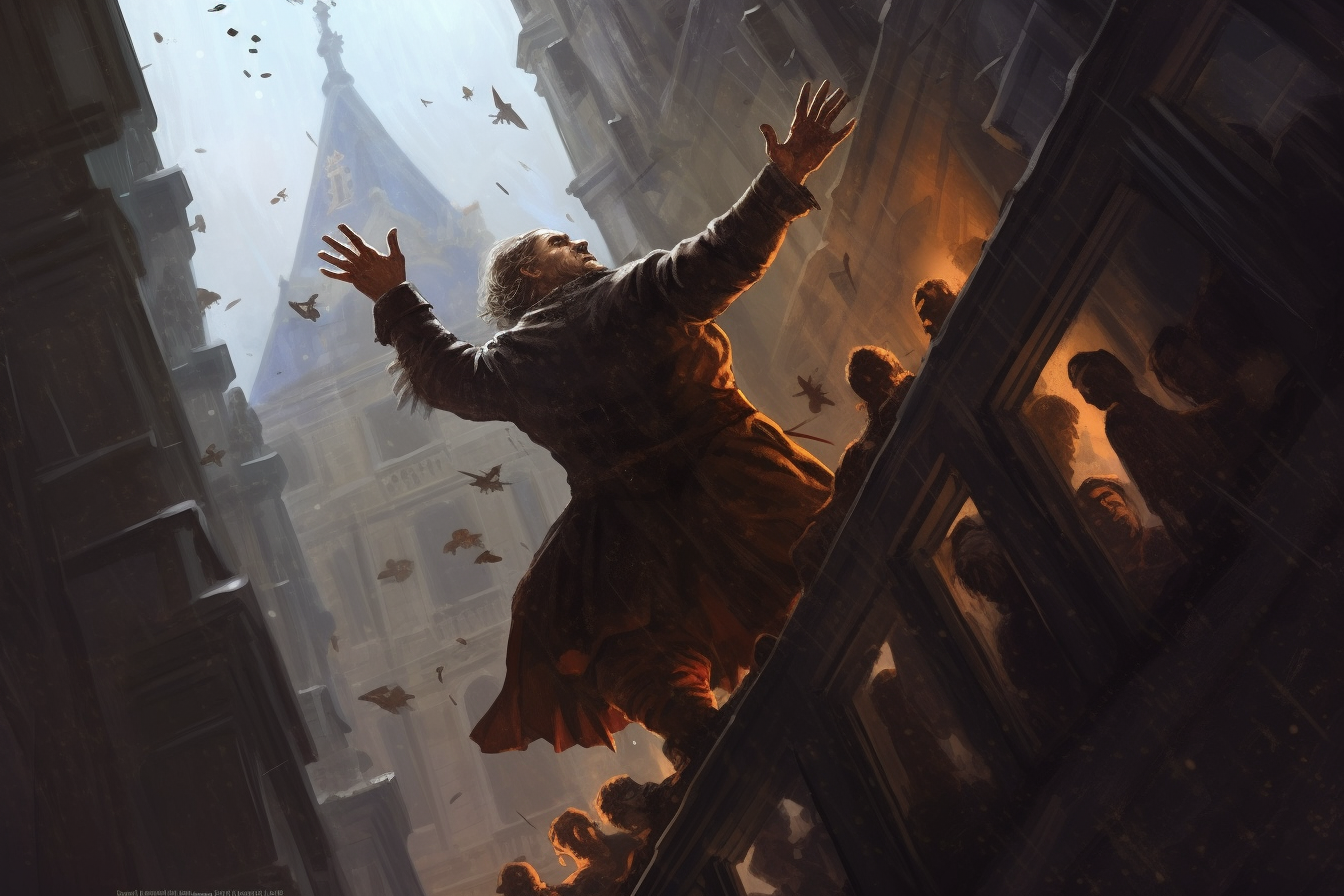When Diplomacy Goes Out the Window: The Defenestrations of Prague
Brace yourself as we plummet into the world of politically motivated window-ejecting.


In the annals of human history, there are events that, on the face of it, seem too absurd to be true. One such event, or rather a series of events, comes to us from the enchanting city of Prague in the heart of Europe. It's a tale of political intrigue, religious fervour, and gravity. Yes, gravity. You see, the good people of Prague had an unconventional method of expressing their dissatisfaction with their political leaders: they would quite literally throw them out of the window. This unusual practice is known as 'defenestration', a term derived from the Latin 'fenestra', meaning window.
The first recorded defenestration occurred in 1483 during the reign of King Vladislaus II of Hungary, then king of Bohemia. Amid a backdrop of religious unrest, the party of the Communion under both kinds, fearing a loss of influence, decided to make their political sentiments known in a most dramatic fashion. The Old Town Burgomaster and seven New Town councillors were defenestrated, their bodies flung from the respective town halls. This violent coup led to a curtailing of ruling power and a pushback against pre-Hussite conditions. The subsequent intermingling of political and religious strife arguably set the stage for Prague's future defenestrations, making the city an inadvertent pioneer in the field of window-based conflict resolution.
The second defenestration took place on 23rd May 1618 and bore significantly greater consequences for European history, leading directly to the Thirty Years' War. The 1618 incident, rather than being a spontaneous act of mob violence, was the result of careful planning by the Protestant lords of the Kingdom of Bohemia. The incident was precipitated by the Habsburg king Ferdinand's efforts to curtail the construction of Protestant chapels on royal land. Such a move was seen as a direct violation of the rights guaranteed to the Protestants by the Letter of Majesty issued by the previous king, Rudolf II.
The Protestant lords, incensed by this perceived infringement on their religious freedom, decided to take matters into their own hands, quite literally. In a meeting hall of the Bohemian Chancellory, the Protestants confronted four Catholic Lords Regent, demanding to know if they were behind the king's efforts to impede Protestant religious practices. Two of the Regents were found innocent and removed from the room, leaving Count Vilem Slavata of Chlum, Count Jaroslav Bořita of Martinice, and secretary Philip Fabricius to face the music. Or more accurately, the open window.
As the accused admitted their responsibility, Count von Thurn, leader of the Protestant lords, declared them enemies of the Protestant religion, after which the three men were defenestrated from the third floor of the Chancellory building. The Catholic representatives survived the 70-foot fall, with Catholics claiming divine intervention and Protestants crediting a conveniently placed dung heap for the miraculous survival. Secretary Philip Fabricius was even ennobled by the emperor for his troubles, gaining the title Baron von Hohenfall - literally "Baron of Highfall".
This event precipitated a rapid descent into the maelstrom of religious conflict that engulfed Europe in the Thirty Years' War. The Defenestration of Prague, in this sense, can be seen as the literal drop that caused a catastrophic ripple effect throughout the continent.
After the second defenestration of Prague, the city seemed to have exhausted its window-based repertoire, and for a time, the windows of Prague could rest easy. The Thirty Years' War had come and gone, but the echoes of bodies hitting the pavement (or dung heaps, depending on who you ask) had a way of lingering in the city's collective memory.
Cue the 20th century, a time of suits, speeches, and the sort of bureaucratic treachery that makes for an excellent backdrop to a defenestration. The main character of our final act? None other than Jan Masaryk, the son of the founder of Czechoslovakia. A dapper chap, by all accounts, but apparently not dapper enough to avoid becoming our third defenestration.
In March 1948, at the height of the Cold War, Masaryk was found dead, sprawled beneath the bathroom window of his apartment at the Foreign Ministry. He was dressed in his pyjamas, which, while not as stylish a departure as one might hope, did add a certain unexpected charm to the scene.
The official line? Suicide. Yes, apparently, Masaryk was so despondent over the communist coup in his country that he decided to fling himself out of a window, thus joining the illustrious line of Prague's airborne politicians. But of course, not everyone bought this 'open-and-shut' case. There were those who raised their eyebrows, mused on the statistical improbability of so many political figures taking the window exit, and decided that perhaps, just perhaps, there was more to this story.
The truth, as they say, is still out there. While we may never know exactly what happened on that chilly March night, we do know one thing for certain: Prague's windows are not to be trifled with. Whether you're a Catholic regent, a Bohemian noble, or a Foreign Minister in your jammies, the windows of Prague have a way of making history, one defenestration at a time.





